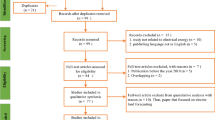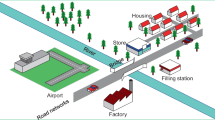Abstract
A big unanswered question in the power industry is how the future demand for energy will be met. As the rate of energy usage increases at an average of 2.3 per cent per year, demand management is one means of dealing with the increasing demands for energy. Pricing that varies for critical peak demand periods and discounted the rest of the time is one means of dealing with the increasing demands for energy. The next frontier for the revenue management and pricing practice will be helping the retail energy providers develop more efficient rate designs or dynamic pricing programs.








Similar content being viewed by others
Notes
The average growth rate, or compound annual growth rate, over a period from 2007 to 2035.
References
Espey, J.A. and Espey, M. (2004) Turning on the lights: A meta-analysis of residential electricity demand elasticities. Journal of Agricultural and Applied Economics 36 (1): 65–81.
Faruqui, A. (2010) Dynamic pricing and customer behavior. Paper presented at the Fourth Annual Electricity Conference: 9 March, Carnegie Mellon University.
Faruqui, A., Hledik, R. and Sergici, S. (2010) Rethinking prices. Public Utilities Fortnightly, January, pp. 30–39.
Faruqui, A., Hledik, R. and Tsoukalis, J. (2009) The power of dynamic pricing. The Electricity Journal 22 (3): 42–56.
Faruqui, A. and Sergici, S.S. (2009) Household Response to Dynamic Pricing of Electricity – A Survey of the Experimental Evidence. Working Paper: Harvard University, Cambridge, MA, http://www.hks.harvard.edu/hepg/Papers/2009/The%20Power%20of%20Experimentation%20_01-11-09_.pdf.
Faruqui, A. and Wood, L. (2008) Quantifying the Benefits of Dynamic Pricing in the Mass Market. Washington DC: Edison Electric Institute.
Herter, K. and Wayland, S. (2010) Residential response to critical-peak pricing of electricity: California evidence. Energy 35 (4): 1561–1567.
Hindes, C. (2009) Smart energy pricing. Paper presented at the Smart Pricing for a Smart Grid World: 05 November, San Francisco, CA.
International Energy Agency (IEA). (2010) World Energy Outlook, http://www.eia.doe.gov/oiaf/ieo/world.html.
International Energy Agency (IEA). (2011) Climate and Electricity Annual 2011 – Data and Analyses. Paris: OECD Publishing.
Newsham, G.R. and Bowker, B.G. (2010) The effect of utility time-varying pricing and load control strategies on residential summer peak electricity use: A review. Energy Policy 38 (7): 3289–3296.
Reiss, P.C. and White, M.W. (2008) What changes energy consumption? Prices and public pressures. RAND Journal of Economics 39 (3): 636–663.
US Census Bureau, International Programs Center (2011) World POPClock Projection, http://www.census.gov/population/popclockworld.html, accessed 6 July 2011.
Acknowledgements
Several graphs presented in this article are based on data publicly available for download from the US Department of Energy (DOE) Energy Information Administration (EIA) web site. I thank the following individuals: John Juliano and Michael Valocchi (IBM) for their reviews and suggestions, and Fabienne Guildhary (IBM) for coordinating their reviews; Emily Horn (IBM) for her assistance in helping me navigate the publication approval process and proofing; Christer Johnson and Adam Gersting (IBM) for their support and encouragement; Jenny Palmer of The Brattle Group for providing me high quality images of some of Dr Ahmad Faraqui's peak demand reduction graphs; Linda Doman at US DOE EIA for clarification on the growth of net electricity generation (see Figure 2); and my wife Kim Quillinan for her support, numerous reviews, suggestions and proofing.
Author information
Authors and Affiliations
Corresponding author
Additional information
bserves as the North American Global Practice Lead for Revenue Management and Pricing within the Business Analytics and Optimization practice of IBM's Global Business Services. His experience includes a diverse portfolio of industries, which includes airlines, hospitality, media and entertainment, and retail, where he implemented revenue management and price optimization models. He now brings a strong focus on price optimization to energy and utilities. He is a certified Revenue Management leader (HSMAI CRME), and Past Chair of the INFORMS Revenue Management and Pricing Section.
Rights and permissions
About this article
Cite this article
Quillinan, J. Pricing for retail electricity. J Revenue Pricing Manag 10, 545–555 (2011). https://doi.org/10.1057/rpm.2011.22
Received:
Revised:
Published:
Issue Date:
DOI: https://doi.org/10.1057/rpm.2011.22




